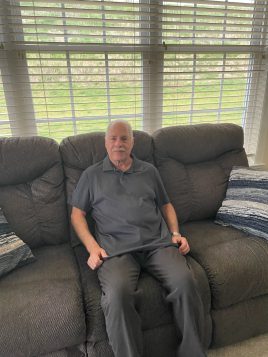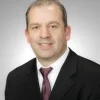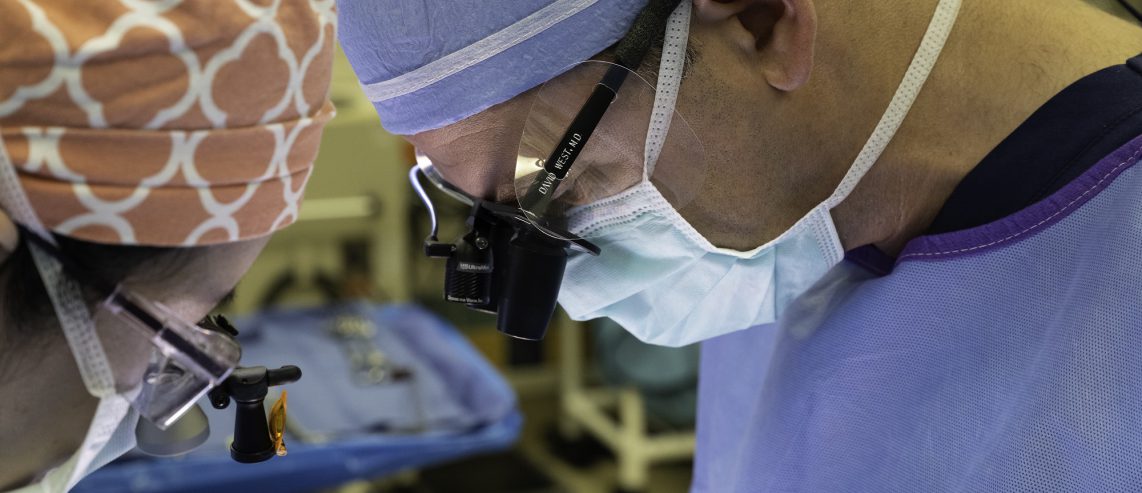 Bill, an avid pickleball player, has plenty of friends to thank for saving his life. During a match with friends, he suddenly felt tightness in his chest. The Gibsonia, Pa. resident then decided to take a break.
Bill, an avid pickleball player, has plenty of friends to thank for saving his life. During a match with friends, he suddenly felt tightness in his chest. The Gibsonia, Pa. resident then decided to take a break.
He soon became lightheaded while waiting for his turn at a third game.
“I remember thinking, ‘What the heck is going on?'” the 69-year-old says. “Then I blacked out. The next thing I knew, I woke up and people were on top of me.”
Those people were Bill’s friends. Thankfully they included a retired police officer with cardiopulmonary resuscitation (CPR) training.
His friends jumped into action when he collapsed. One called 911. The other four took turns doing CPR.
Someone from the community clubhouse where they played brought out an automated external defibrillator (AED). They used the AED to shock his heart and get it pumping again. By the time paramedics arrived, he was conscious and breathing.
“It was a perfect scenario,” says Bill, whose wife is a retired UPMC nurse. “Without them helping me, I would have died. Without CPR and the AED, I wouldn’t be here today.”
Never Miss a Beat!
Subscribe to Our HealthBeat Newsletter!
Thank you for subscribing!
You can now select the specific newsletters you'd like to receive.
You are already subscribed.
Subscribe to more newsletters in our email preference center.
Sorry, an error occurred. Please try again later.
Get Healthy Tips Sent to Your Phone!
Increasing Survival with CPR
According to the American Heart Association (AHA), more than 350,000 out-of-hospital cardiac arrests occur yearly in the United States. Nearly 90% of those are fatal. CPR can double or triple the chance of survival if performed right away.
“Bill survived because people were there to help him,” says David West, MD. Dr. West is a cardiothoracic surgeon and director of cardiac surgery at the UPMC Heart and Vascular Institute at UPMC Passavant.
“Every second counts. The longer you go without CPR, the less chance of recovery,” West says. “In this case, CPR protected Bill while they were getting the AED. The AED reversed everything.”
CPR kept blood and oxygen flowing to Bill’s organs. And the AED restarted his heart, explains Dr. West. He later performed Bill’s open heart surgery.
Life-saving Open Heart Surgery
Betsy Tedesco, DNP, RN, CEN, is the clinical director of emergency services at UPMC Passavant. She says the quick action by Bill’s friends activated what the AHA calls a “chain of survival.”
The chain of survival is a life-saving series of steps to take during cardiac arrest. It starts with early recognition of the crisis. Then, activation of an emergency response. Finally, performing CPR until help arrives.
“It’s great to have early intervention when an event like that happens,” she says. “There’s less wasted time and a better opportunity for the patient to have a good outcome.”
That chain continued when paramedics took over at the scene. They began communicating with the nearby UPMC Passavant–McCandless Emergency Department (ED) right away.
The paramedics sent Bill’s electrocardiogram (EKG) reports to the ED team. This information allowed the ED to prepare for his arrival. They also alerted the hospital’s cardiac catheterization lab staff.
Within an hour of his arrival, Bill underwent a diagnostic cardiac catheterization to evaluate his heart. The procedure showed severe blockages in two of the three main arteries to his heart. The blockages caused a heart attack, which led to sudden cardiac arrest.
“They told me I needed double bypass surgery,” says Bill.
The doctors moved him first to UPMC Passavant’s cardiac intensive care unit. There they could monitor him during extensive testing of his heart function. They also test to find other issues, including damage from the heart attack.
A few days later, Dr. West performed a coronary artery bypass graft (CABG), a type of open heart surgery. Using an artery from Bill’s rib cage and a vein from his leg, Dr. West rerouted blood flow around the blockages to restore blood flow.
Dr. West did the life-saving surgery. But he gives credit to the bystanders who jumped into action that day.
“Bill was very fortunate to receive that immediate care,” he says. “If more people take time to learn CPR and become comfortable using an AED, more lives will be saved.”
Life After Surgery
Bill went home six days after his surgery, just ten days after his near-fatal heart attack. Four weeks later, he began cardiac rehabilitation at UPMC Passavant–Cranberry. During rehab, he wore a heart monitor, and the team monitored his blood pressure while exercising.
“I was happy to do the rehab. I wanted to get stronger,” Bill says. “It gave me confidence knowing they were monitoring my heart during rehab to make sure it was working properly.”
Bill plans to continue exercising at his community clubhouse after rehab ends. And he looks forward to resuming his active lifestyle. He plans to return to playing golf, bowling, and — yes — pickleball later in just a few short months.
“I feel very lucky. I’m feeling good and getting stronger every day,” Bill says. “I’m so glad they took me to UPMC Passavant. I was in good hands there.”
“I’m grateful for the wonderful care I received,” Bill says. “Everyone there was top-notch, and Dr. West was excellent.”
Learn more about advanced cardiac services close to home.
Editor's Note: This article was originally published on , and was last reviewed on .
Sources
American Heart Association. CPR Facts & Stats. Link.
About Heart and Vascular Institute
The UPMC Heart and Vascular Institute has long been a leader in cardiovascular care, with a rich history in clinical research and innovation. As one of the first heart transplant centers in the country and as the developer of one of the first heart-assist devices, UPMC has contributed to advancing the field of cardiovascular medicine. We strive to provide the most advanced, cutting-edge care for our patients, treating both common and complex conditions. We also offer services that seek to improve the health of our communities, including heart screenings, free clinics, and heart health education. Find an expert near you.

